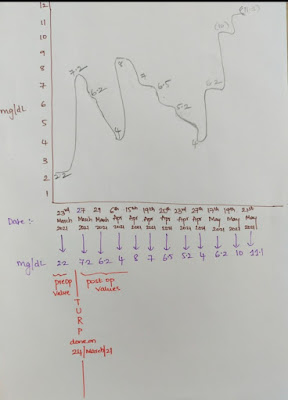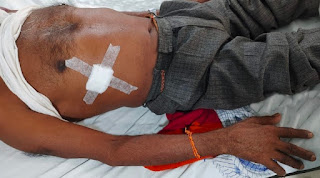Postings assignment work
1. Stress Hyperglycemia in TB
Reference - https://www.ncbi.nlm.nih.gov/pmc/articles/PMC6309553/
During initial Mycobacterium tuberculosis (Mtb) infection and during TB disease, pro-inflammatory and anti-inflammatory cytokines such as interleukin (IL)-1, IL-6, IL-10, interferon (IFN)-γ and tumor necrotic factor (TNF)-α are produced.
macrophages generate nitric oxide and reactive oxygen species, T-cells, and natural killer (NK) cells
Because increased levels of pro-inflammatory cytokines, reactive oxygen species and nitric oxide are hallmark of the host response to Mtb, similar mechanisms of hyperglycemia may be at play among patients with active TB.
Pro-inflammatory cytokines released during TB disease also activate the hypothalamic–pituitary axis, increasing the release of cortisol, prolactin, catecholamine, estradiol, dopamine, epinephrine, norepinephrine, and thyroid and growth hormones
2.Ocular TB
Reference source - https://www.reviewofophthalmology.com/article/recognizing-and-treating-ocular-tb
Intraocular tuberculosis is usually suspected based on the clinical signs, and the diagnosis is further supported by ancillary and laboratory investigations. Ancillary investigations, including fundus autofluorescence, fluorescein angiography, indocyanine green angiography and optical coherence tomography, may detect characteristic features and are useful in detecting posterior segment disease.
Choroidal tubercles are mostly located in the posterior pole or mid-periphery, and they show initial hypofluorescence in the early phases of FA, followed by hyperfluorescence in the later phases. These tubercles can also be seen as focal areas of choroidal elevation on OCT. Choroidal granulomas appear as subretinal yellowish lesions and may be associated with retinal detachment and subretinal fluid (Figure 1). The larger granulomas may form subretinal abscesses. Similar to choroidal tubercles, granulomas and abscesses are associated with early hypofluorescence and late hyperfluorescence.
3. Renal compliactions of DTPA scan
Small dosage of the ionising radiation is given very similar to the imaging tests. This small dosage being very similar to the other types of imaging tests does not have risks.
4.Drug induced cholestatsis
https://m.ufhealth.org/drug-induced-cholestasis
Drug-induced cholestasis is a slowing of the flow of bile from the liver that results from medication use
Certain drugs can slow or stop the flow of bile from the liver to the gallbladder and gut, which may damage the liver.
Many drugs can cause cholestasis, including:
- Ampicillin and other penicillin-based antibiotics
- Anabolic steroids
- Chlorpromazine
- Cimetidine
- Erythromycin estolate
- Estradiol
- Gold salts
- Imipramine
- Nitrofurantoin
- Oral contraceptives
- Prochlorperazine
- Sulindac
- Terbinafine
- Tolbutamide
5.Nsaid induced Nephropathy
https://www.ncbi.nlm.nih.gov/books/NBK541101/
Prostaglandins have vasodilatory effects, improving renal blood flow. Inhibition of this pathway may have a direct cause in analgesia-induced nephropathy.
Inhibition of prostaglandin can lead to a high metabolite concentration in the medullary region, causing papillary necrosis, chronic interstitial nephritis, and chronic tubular interstitial nephritis.
From mononuclear infiltration to eosinophilic deposits, the different histopathological features in confirmed cases of analgesic nephropathy include interstitial fibrosis, papillary calcifications, and metabolite deposits in the medullary zone.
.



Comments
Post a Comment